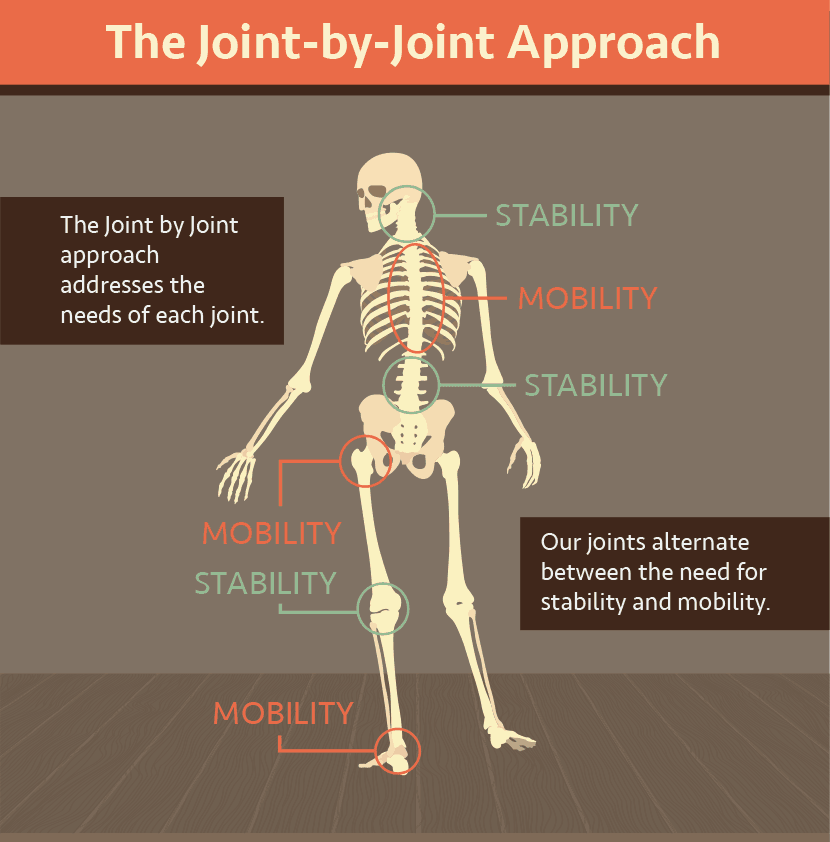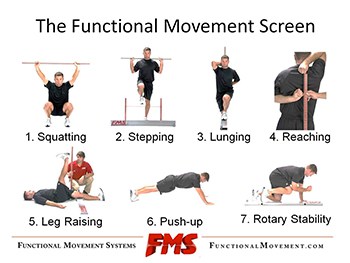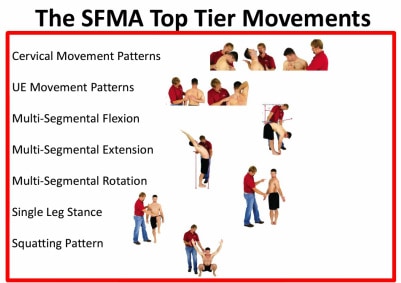
The NEW Joint-By-Joint Approach (part 1)
The popular — and still conceptually relevant — joint-by-joint approach championed a decade ago lent logic to the idea that a problem that revealed itself in one area may be caused by dysfunction in another. There were stable joints, and there were mobile joints, and the function of these joints alternated based on proximity. Stable joints had limited movement and mobile joints had almost unlimited movement. Stable joints held their position so the mobile joints had a fixed point in which they could move from.
Mobile joints became stiff due to adapted use in a singular position. Sitting for hours at a time, day after day, makes otherwise mobile hips ‘stuck’ in that flexed, seated position. To compensate and keep the alternating peace, stable joints became hypermobile. Knee pain, for example, is often caused by movement limitation in the hip or ankle. Useage-created stiffness either above or below would create sloppiness in between. The old adage holds true: if you don’t use it, you lose it. The effects of this loss, though, is not kept local. Since everything is connected, adjustments made in one place seep everywhere else, for good and for bad.
As keen as this joint-by-joint approach was, it was a bit too generalist to be efficient at actually sourcing the cause of pain or dysfunction. Guesses were made above and below the point of issue with not much direction in terms of prioritizing or sequential trouble-shooting. Gray Cook, co-author of this theory, expanded on the over-simplification by stating,
“Joint-by-joint is an excellent template to get you past that entry-level thinking that Kinesiology 101 is going to save the day. It makes you consider joints above and below, but if you really want another way to check yourself, look at the whole patterns of movement.”
He followed up this line of thought by creating the Functional Movement Screen. Meant to be a means to standardize ‘fundamental’ movement patterns, he developed a seven-exercise gauntlet that could quickly screen for ability and pain:
The problem was, narrowing down the potential of all human movement into a selected number of snapshots still left a lot unseen. If pain was present, everything stopped. It was the ultimate roadblock; referring the user out to a more qualified professional. And the patterns were still to big. The screener could get a better feel for motor control issues in this system, but the movements analyzed still crossed multiple joints. Furthermore, they left out investigation into the neck and spine — two of the biggest players in the game that define postural alignment.
The Selective Functional Movement Assessment (SFMA) pared down these movements even more, slivering the seven into multiple different fragments for evaluation. This was a diagnostic tool. It sought to find cause and diagnose the root of the problem. It took special interest in that neck and spine that the FMS dared not touch. Unfortunately, the system was left out of most fitness circles and only promoted in medical communities who were allowed to put their hands on people. The trainers, coaches, and teachers who had access to all the people weren’t legally (hippocratically?) privileged to practice and share this information.
What was missing was a system that goes beyond assessment and blends into training. It needed to be freely given to anyone who was willing to take (and pay for) a seminar, regardless of their scope of practice. Enter Functional Range Conditioning, a practical application of joint fixing, and we have a frenzy in the works. The genius of the FRC is that it screens, segments, and improves active ranges of motion all at once through Controlled Articular Rotations (or CARs). Below, Dr. Andreo Spina demonstrates an example:
It’s important to realize that CARs are the first step of the FRC system. It starts with the joints — more specifically, the neck and spine. It doesn’t begin with a desired movement and work backwards. This NEW joint-by-joint approach lets the joints dictate which movements you are ready for. If a joint isn’t ready, you make it ready. How to make ‘joints work nice’ is the fundamental teaching. The goal is to create healthy joints, control what you’ve got, and expand upon your useable range of motion.
In understanding the joints, we better understand movement and/or the limitations thereof. Thinking small allows for a much greater creative expression, and that’s what all the excitement is about.






